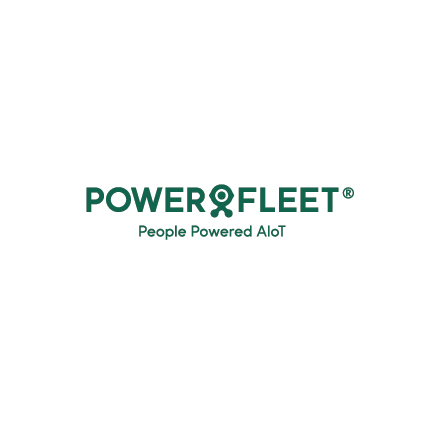Telematics are making it easier than ever to monitor, track, and secure trucking assets and cargo across the supply chain. While GPS is the most widely adopted telematics technology, many other sensors provide immense value beyond location. You can track everything from environmental conditions to load status for maximum visibility.
Let’s look at three ways that sensors help keep cargo safe, increase efficiency, and provide visibility.
Telematics are making it easier than ever to track cargo, but trucking companies should look beyond simple GPS solutions. Click To Tweet#1. Freight Visibility
Visibility is a critical aspect of staying on schedule and providing quality customer service to any transportation and logistics company. Fortunately, IoT sensor technologies offer a full view inside trailers with freight cameras, and cargo and door sensors. These technologies are making it easier to protect cargo, reduce empty miles, and plan routes efficiently.
Freight sensors/cameras can relay real-time information to drivers and dispatchers and provide alerts when things go awry. In addition to temperature, these sensors can also track humidity, defrost cycles, power status, and various other conditions. Using freight cameras can also help reduce idle time by detecting idle assets, their locations, and whether they are empty or loaded.
This is especially important for refrigerated trailer operations as they must provide accurate proof of temperature information to comply with food and drug safety regulations and avoid costly spoilage claims.
These technologies allow carriers to provide more than just the right temperature and set themselves apart from competitors.
#2. Just-in-Time Capacity
Several factors, including the massive increase in consumer and industrial demands, have thrown the supply chains out of balance over the last two years. The normal 3.5-day cycle for a chassis to pick up a container and return to the yard has been stretched to 17 days. A clever intermodal operation however can help keep things moving smoothly in such a volatile environment.
There are many different ways that telematics can help improve asset utilization:
- Location Tracking: Knowing the real-time location of trucks, trailers, and chassis can help you optimize asset utilization and ensure everyone is taking the most efficient routes with the right trailers and containers.
- Load Status: Trailer sensors can tell you the real-time load status of every trailer, making it easy to optimize their usage and redistribute them between locations to address capacity issues, as well as automate yard checks.
- Chassis Tracking and Monitoring: In order to increase container utilization and reduce transit cycle time, chassis tracking and monitoring information about whether a container is on or off and whether a container is loaded or empty are vital. With this information, you can improve tight capacity issues and dwell time.
In addition to greater efficiency, telematics can help avoid mistakes in trailer assignments—a significant concern for drivers. Companies that send drivers to locations they cannot bill experience frequent reassignment and a lot of driver frustration. These frustrations can result in higher driver turnover and exacerbate existing driver shortages.
Powerfleet’s Chassis Monitoring Solutions provide continuous real-time visibility during transit, as well as more accurate arrival and departure information. Additionally, the solution offers next-level intelligence regarding container availability. It detects the displacement of weight to determine if cargo is being loaded in the container. Gaining this intelligence is crucial for creating more velocity in the supply chain while increasing utilization of your existing fleet.
#3. Third-Party Visibility
Nowadays, customers expect full transparency into the location and status of their shipments. However, tracking containers becomes much more difficult when they leave your fleet vehicles. Intermodal transportation for example has become a vital part of the process as a result of driver and chassis shortages in the supply chain. However, this can also cause a lack of visibility into delivery processes. Carriers can gain a competitive edge by using cloud-based software solutions that provide accurate arrival and departure times and freight status with their customers. This leads to improved customer satisfaction through communication of the latest updates, a reduction of dwell/detention times by letting customers know how long a trailer has sat at the site, and ultimately improving bottom line.
Powerfleet SaaS platform features open APIs and the ability to integrate with other third-party systems for shared intelligence that provides our customers a competitive advantage.
Choosing the Right Platform
Telematics are a central component of a fleet management system. When choosing the right provider, you should consider more than just the upfront cost. The lowest total cost of ownership and best long-term return on investment depends on several factors, including reliability, ease-of-use, customer support, and more.
Some features to look for include:
- Ease of Use: An intuitive and easy-to-use business dashboard is essential to get the most value from telematics solutions.
- Compatibility: If you already use a specific fleet management system, you should ensure new telematics work with it.
- Durability: Telematics solutions should be able to weather heat, precipitation, and external shocks to maximize uptime.
- Power: The best telematics use long-term batteries or solar power to deliver insights without interruption.
- Support: Strong customer support teams are critical to quickly addressing any questions and challenges you might face.

Real Cargo Status Visibility Source: Powerfleet
The Bottom Line
Telematics make it easy to monitor, track, and secure fleet assets. While GPS is the most widely used technology, many other sensors and freight cameras provide insights beyond location. Fleets should embrace these sensors to maximize their quality assurance and minimize disputes from customers or supply chain partners.
